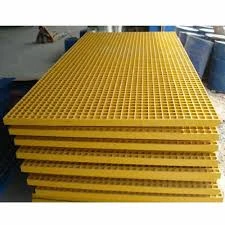loading...
- No. 9, Xingyuan South Street, Dongwaihuan Road, Zaoqiang County, Hengshui, Hebei, China
- admin@zjcomposites.com
- +86 15097380338
- Welcome to visit our website!
frp reinforcement bars
Advancement in Construction The Role of FRP Reinforcement Bars
In recent years, the construction industry has undergone significant transformations, driven by the need for more durable, lightweight, and corrosion-resistant materials. Among the most promising innovations are Fiber Reinforced Polymer (FRP) reinforcement bars, which have emerged as a compelling alternative to traditional steel reinforcement bars (rebar). This article delves into the benefits, applications, and future potential of FRP reinforcement bars in modern construction.
What are FRP Reinforcement Bars?
FRP reinforcement bars are composed of a polymer matrix reinforced with fibers, typically glass, carbon, or aramid. The resulting composite material boasts a high strength-to-weight ratio, impressive resistance to corrosion, and superior durability compared to traditional steel bars. These characteristics make FRP bars particularly well-suited for a variety of applications, both in new construction and rehabilitation projects.
Advantages of FRP Reinforcement Bars
1. Corrosion Resistance One of the most significant advantages of FRP bars is their inherent resistance to corrosion. Unlike steel, which is vulnerable to rust and deterioration when exposed to moisture and aggressive environments, FRP bars maintain their structural integrity over time. This feature is crucial in areas where infrastructure is exposed to harsh chemicals, such as bridges, marine environments, and wastewater treatment facilities.
2. Lightweight FRP bars are considerably lighter than their steel counterparts, which simplifies handling and reduces labor costs during construction. The lower weight also decreases the overall load on supporting structures, making FRP a favorable choice in applications where weight-saving is critical.
3. Low Thermal Conductivity The thermal properties of FRP bars add another layer of versatility. Their low thermal conductivity means that they don’t transfer heat as efficiently as steel, which can be advantageous in certain applications. This feature helps reduce thermal expansion issues and can lead to improved energy efficiency in buildings.
4. Flexibility in Design The ability to mold and shape FRP bars allows architects and engineers greater flexibility in design. They can be manufactured to meet specific project requirements, thus enabling creative solutions that might be challenging to achieve with traditional rebar.
5. Longevity and Cost Savings Although the initial cost of FRP bars might be higher than that of steel, their long-term advantages often lead to cost savings. The extended lifespan and reduced maintenance needs associated with FRP reinforcement can significantly lower overall project costs over time.
frp reinforcement bars

Applications of FRP Reinforcement Bars
FRP reinforcement bars are increasingly used in various applications, including
- Bridges and Infrastructure FRP bars are utilized in bridge decks and piers, providing the necessary strength while resisting corrosion and reducing maintenance costs.
- Marine Structures The hostile marine environment makes FRP an ideal choice for docks, seawalls, and other structures frequently exposed to saltwater.
- Highway and Transportation Projects With their lightweight properties, FRP bars are well-suited for transportation applications, including precast concrete elements.
- Residential and Commercial Buildings In areas with high humidity or chemicals, the use of FRP bars in foundations and reinforcement systems enhances durability and reduces the need for frequent repairs.
Future Potential and Challenges
While the advantages of FRP reinforcement bars are clear, industry adoption has been gradual. Challenges such as higher initial costs, limited awareness, and the need for updated design codes can impede the widespread integration of FRP in construction practices. However, ongoing research and development are addressing these hurdles, leading to innovations that may lower production costs and expand applications.
As the construction industry continues to evolve toward sustainability and resilience, FRP reinforcement bars stand at the forefront of material innovation. Their unique set of properties offers a promising solution for challenges posed by climate change and infrastructure deterioration. By embracing this advanced technology, builders and engineers can enhance the longevity and safety of our structures, paving the way for a more durable future.
In conclusion, the integration of FRP reinforcement bars marks a significant step forward in construction technology, combining performance, sustainability, and design flexibility. As awareness and application of these innovative materials grow, they are likely to redefine standards in the industry, setting a new benchmark for the durability and resilience of infrastructure solutions.
-
The Rise of FRP Profiles: Strong, Lightweight, and Built to LastNewsJul.14,2025
-
SMC Panel Tanks: A Modern Water Storage Solution for All EnvironmentsNewsJul.14,2025
-
GRP Grating: A Modern Solution for Safe and Durable Access SystemsNewsJul.14,2025
-
Galvanized Steel Water Tanks: Durable, Reliable, and Ready for UseNewsJul.14,2025
-
FRP Mini Mesh Grating: The Safer, Smarter Flooring SolutionNewsJul.14,2025
-
Exploring FRP Vessels: Durable Solutions for Modern Fluid HandlingNewsJul.14,2025
-
GRP Structures: The Future of Lightweight, High-Performance EngineeringNewsJun.20,2025
